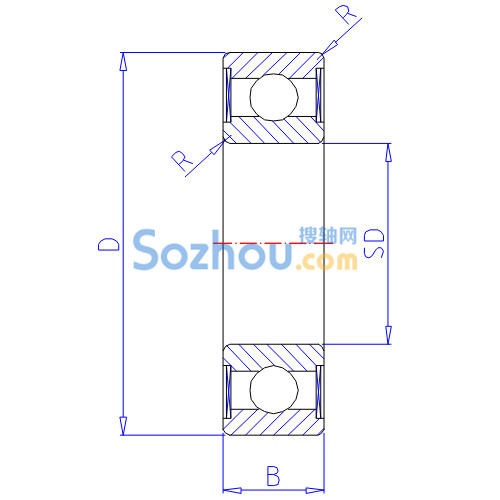Many people know that guide rails and sliders must be used together, neither can be missing, but few understand how these two hardware components are matched. Below, we will detail the nine aspects of how guide rails and sliders are used in conjunction.
As long as the assembly height is the same, all mounting holes on the guide rails and sliders have the same positions and dimensions, they can be installed in the same position on the machine tool. The main differences lie in precision, load capacity, and service life. Different brands offer corresponding models that can be replaced as a whole in the same position on the machine.
1. First, we must understand the differences between extension guide rails: when using extension guide rails, if the HIWIN brand uses the same set of guide rails marked with the same uppercase English letters, consecutive Arabic numerals indicate the sequential connection, and the splicing joints are connected with the same Arabic numerals to ensure the accuracy of the guide rail.
2. Correctly distinguish between reference guide rail pairs and non-reference guide rail pairs. Align the reference side of the guide rail with the reference side of the installation base step, align the screw holes, then loosely fix the guide rail with bolts. The remaining three guide rails are placed freely on the base surface in sequence.
3. Calibration of the main guide rail. The calibration of the guide rail must be adjusted through linear length measurement by a laser interferometer. The straightness over the entire travel must be less than 0.03-0.05. A torque wrench must be used to tighten the screws to a specific torque, and wedges must be used to tighten the sides of the guide rail pair. The difference from calibrating ordinary guide rails lies in the different gauges used; ordinary guide rails use lever-type micrometers or dial indicators for calibration, but the method is the same.
4. After calibrating the main guide rail, use it as a reference to calibrate the other three guide rails in the same manner.
5. Check whether the calibration of the four guide rails meets the requirements, whether each guide rail's fixing screws and wedge fixing screws are not omitted, and whether the screws are tightened to the specified torque. After all inspections are completed, install green plugs for dust protection in the sunken holes of the guide rails.
6. The slider base (i.e., worktable, spindle housing, etc.) can now be installed. Place the worktable on the flat surface of the slider base, align it with the mounting screw holes, and gently press down; tighten the clamping device on the reference side of the slider base to make the reference side of the slider base tightly adhere to the side of the table on the base surface. Tighten the screws on the reference side and non-reference side of the slide seat in a diagonal sequence.
7. After installation, check if it runs smoothly throughout the travel, if there is any damage or obstruction, and if the friction resistance does not change significantly throughout the travel. Address any obstacles promptly to prevent future issues. After meeting the above requirements, you can check the accuracy requirements, such as the straightness and parallelism of the working surface.
8. Connect the lubrication circuits for each slider. The purpose is to reduce frictional resistance, lower driving power, improve efficiency; reduce wear on the guide rails, prevent corrosion of the guide rails; avoid crawling and reduce vibration under low-speed and heavy-load conditions; reduce friction heat and thermal deformation at high speeds.
9. Install protective devices on the guide rails to prevent cutting chips, dust, and other contaminants from falling onto the guide rail surfaces, which could cause scratches, rusting, and premature wear. For this purpose, scraper plates or covers should be installed at the ends of the moving guide rails to prevent the exposure of the guide rails.





